This post may contain affiliate links. Please see our disclosure policy.
Muscadine juice is a richly flavored, naturally sweet grape juice made from wild or cultivated muscadine and scuppernong grapes. These thick-skinned grapes are native to the southeastern United States and are packed with flavor, antioxidants, and natural pectin.
While some people think muscadines are too intense to enjoy fresh, they make an incredible juice that can be enjoyed on its own, used in muscadine jelly, or turned into muscadine wine!
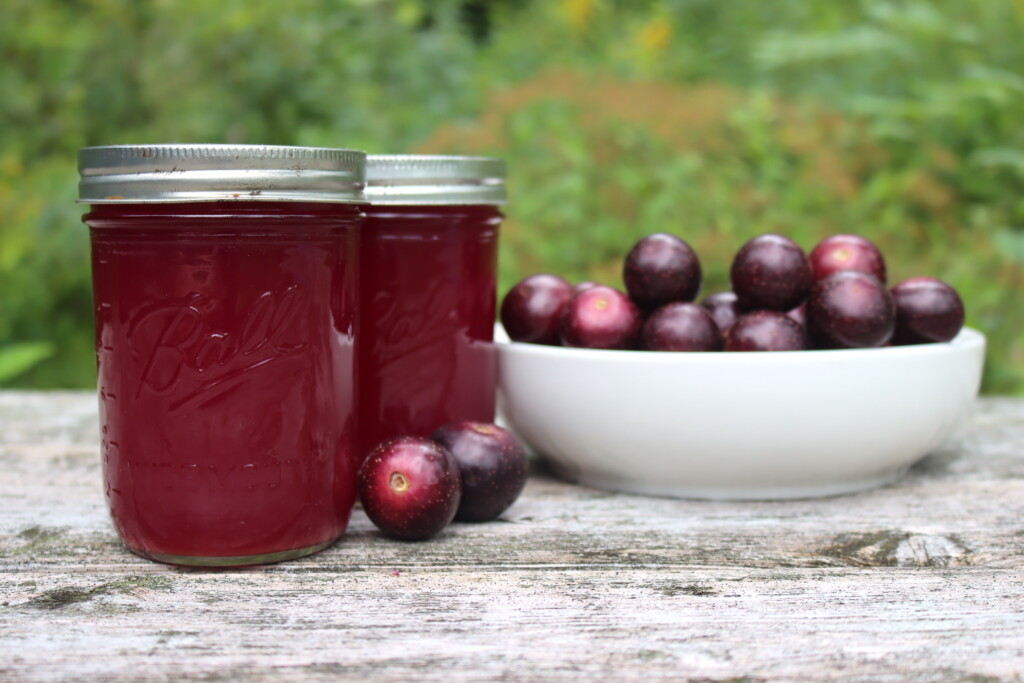
Muscadine juice is a rich, flavorful drink made from native Southern grapes that grow wild across the southeastern U.S. These grapes—whether dark purple muscadines or golden-green scuppernongs—are known for their thick skins, bold flavor, and natural sweetness. While they’re often a bit too intense to enjoy fresh by the handful, they make an exceptional juice that’s deeply fruity and aromatic.
Making muscadine juice at home is a simple process, whether you’re using a steam juicer or simmering the grapes on the stovetop. Once extracted, the juice can be canned for shelf-stable storage or sweetened and served fresh. It’s an excellent base for homemade jelly, shrub drinks, or even wine, and preserving it now means you’ll have a taste of grape season all year long.
For those with access to wild vines or backyard grape arbors, muscadine juice is one of the easiest ways to put up a large harvest without needing to deal with seeds or skins. The resulting juice is smooth, richly colored, and full of old-fashioned flavor
Canning muscadine juice is a great way to preserve the harvest, especially if you’re not ready to make jelly right away. Once the juice is extracted and processed in jars, it’s shelf-stable for up to 18 months and ready to use whenever you need it.
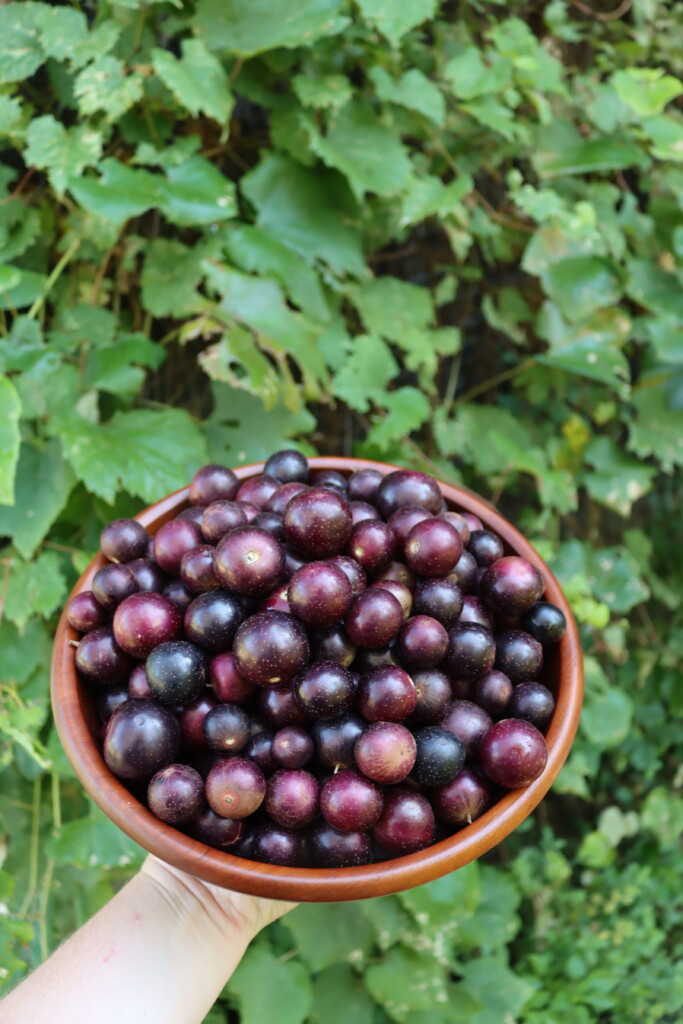
What Are Muscadines?
Muscadines (Vitis rotundifolia) are native American grapes that grow well in hot, humid climates. They’re typically larger and more robust than table grapes, with tough skins and a deep, fruity flavor. Scuppernongs are a lighter green-gold variety of muscadine, but the preparation is the same whether you’re using dark purple or golden grapes.
They grow wild in much of the South and are also widely cultivated. If you’re lucky enough to have access to a vine—or a generous neighbor—they’re well worth preserving.
Ingredients for Muscadine Juice
Muscadine juice is made with just one ingredient: fresh grapes. You can use any variety of muscadines or scuppernongs, depending on what’s available to you. The grapes should be fully ripe but not overripe—look for fruit that’s plump, aromatic, and slightly soft to the touch. Both dark purple muscadines and golden-green scuppernongs will work equally well, though the color and flavor of the juice will vary slightly depending on the variety.
To make one quart of muscadine juice, you’ll need about 3 to 4 pounds of grapes. For a full canner load of 7 quarts, plan on 20 to 28 pounds of fruit. You don’t need to add sugar unless you want a sweeter juice—muscadines are naturally sweet enough for most palates. If you do choose to sweeten it, use about ¼ to ½ cup of sugar per quart, added after the juice is extracted and heated.
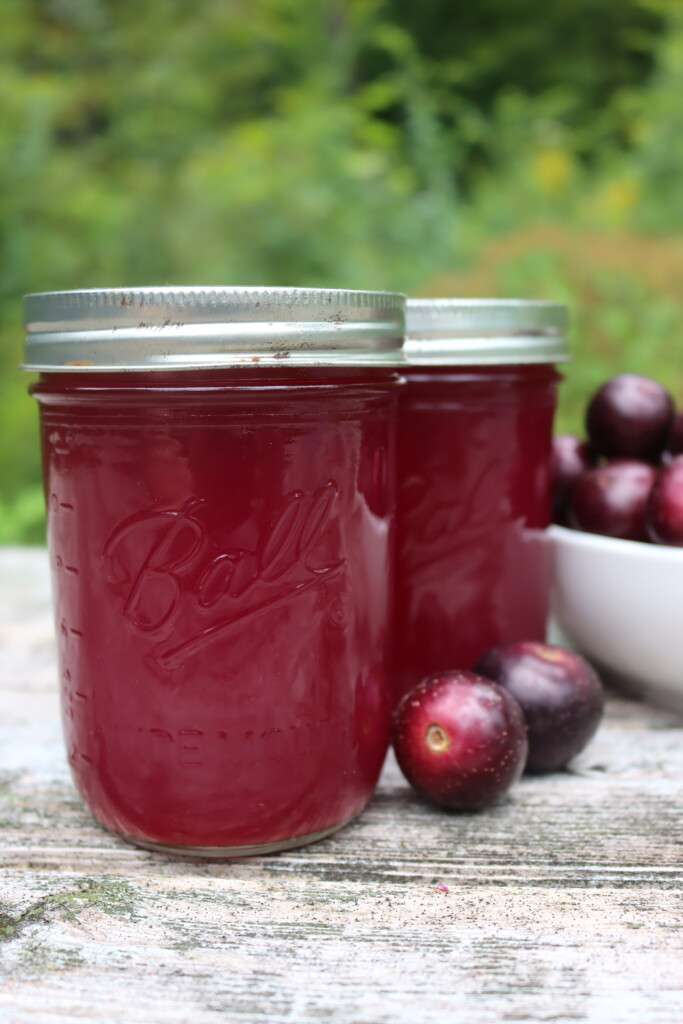
How to Make Muscadine Juice
You can make muscadine juice using a steam juicer, or by simmering and straining the grapes on the stovetop. Both methods work well and require no added sugar or preservatives.
Steam Juicer Method
This is the easiest way to make clear muscadine juice with minimal hands-on effort. Wash and sort your grapes, then load them into the top basket of the steam juicer. Add water to the bottom chamber and heat until the steam starts extracting juice from the fruit. Collect the hot juice through the center spout and either can it immediately or refrigerate for later use.
Stovetop Method
If you don’t have a steam juicer, the stovetop method works just as well. Rinse your grapes and place them in a large pot with just enough water to prevent scorching—about 1 cup of water per 4 pounds of grapes. Crush them gently with a potato masher to help release the juice.
Bring the mixture to a boil, then reduce the heat and simmer for about 10 to 15 minutes, stirring often. Once the grapes are soft and the juice is released, strain the mixture through a fine mesh strainer or jelly bag. Let it drain naturally—don’t press or squeeze the solids or the juice may turn cloudy.
Canning Muscadine Juice
Once your juice is extracted, you can refrigerate it for short-term use or can it for long-term shelf storage. You can sweeten it if you like, but most muscadine juice is sweet enough on its own and doesn’t require added sugar.
To can, fill jars leaving ½ inch headspace and process in a waterbath canner for 10 minutes (or 15 minutes above 6,000 feet in elevation).
How to Use Muscadine Juice
Home-canned muscadine juice can be served chilled straight from the jar, or used as a base for other recipes. It makes a fantastic mixer for homemade wine, shrub drinks, or cocktails. You can also use it to make muscadine jelly or syrup, homemade popsicles, fruit punch or juice blends, or cook it into glazes for pork or poultry.
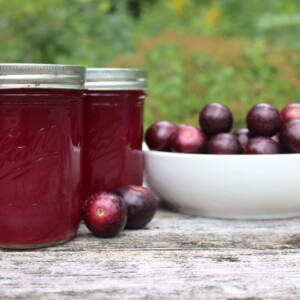
Muscadine Juice
Ingredients
- 3 to 4 lbs muscadine or scuppernong grapes, per quart of juice
- Optional: ¼ to ½ cup sugar per quart of juice, to taste
Instructions
- Prepare the grapes: Rinse the grapes thoroughly and discard any underripe or spoiled fruit. Remove stems.
Extract the juice (choose one method):
- Steam juicer method: Place grapes in the top basket of a steam juicer. Add water to the base and heat according to the manufacturer’s instructions. Collect the juice from the center spout until you’ve extracted the desired amount.
- Stovetop method: Place grapes in a large stockpot with 1 cup of water per 4 pounds of fruit. Gently crush with a potato masher, then bring to a simmer. Cook for 10 to 15 minutes, stirring often, until the skins burst and juice is released. Strain through a fine mesh strainer or jelly bag, and let drain without squeezing.
- Sweeten (optional): Taste the juice. If desired, stir in ¼ to ½ cup sugar per quart. Heat to 190°F to dissolve the sugar, but do not boil.
Canning Muscadine Juice
- Prepare jars and canner: Sterilize jars if processing for under 10 minutes. Heat lids and prepare a boiling water bath canner.
- Fill jars: Ladle hot juice into hot jars, leaving ¼ inch headspace. Wipe rims, apply two-piece lids, and tighten finger-tight.
- Process in a boiling water bath canner: Process pints or quarts for 10 minutes at elevations up to 6,000 feet, or 15 minutes above 6,000 feet. Start timing once the water returns to a full boil.
- Cool and store: Remove jars from the canner and let cool undisturbed for 12 to 24 hours. Check seals and store in a cool, dark pantry for up to 18 months.
Notes
Nutrition
Nutrition information is automatically calculated, so should only be used as an approximation.
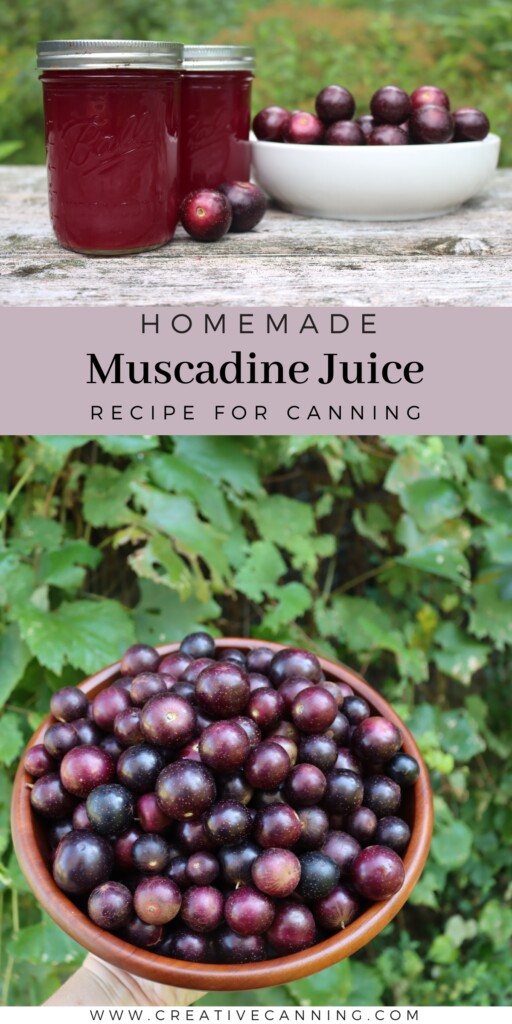
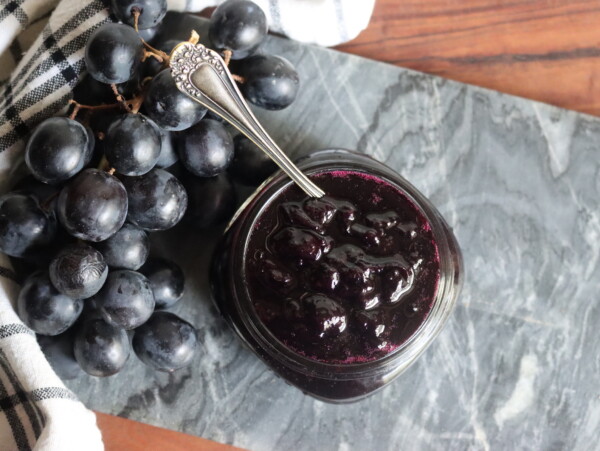
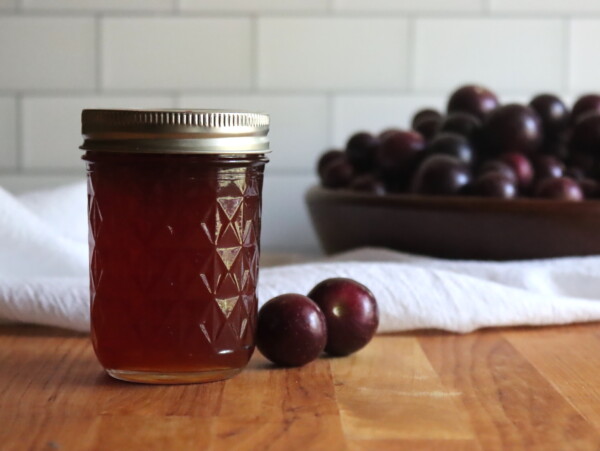
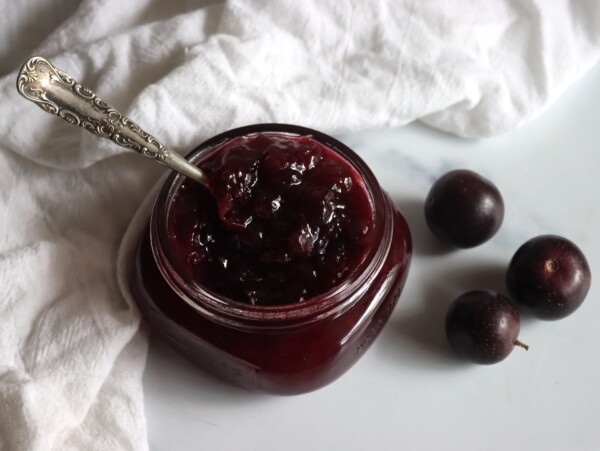
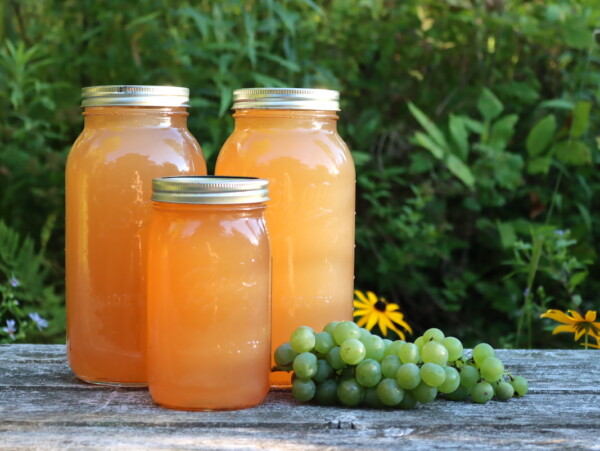
So easy to make, and you don’t have to worry about sugar ratios or getting things to gel stage like you do when you try to make muscadine jam or muscadine jelly. Couldn’t be easier!